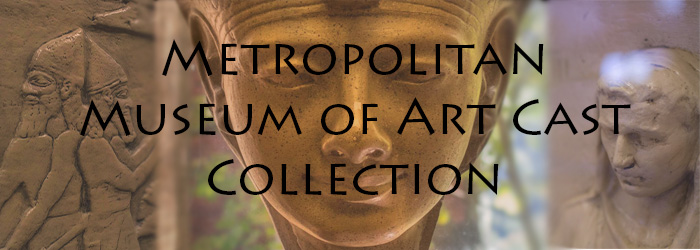
Description
Plaster cast of a relief depicting the Goddess Hathor in human form. Original location unknown.
Publication Date
1978
Type of Artwork
Relief
Time Period/Geographical Region
Ancient Egypt
Height (cm/in)
88.9 cm / 35 in
Width (cm/in)
48.26 cm / 19 in
Depth (cm/in)
6.35 cm / 2.5 in
Disciplines
Ancient History, Greek and Roman through Late Antiquity | Sculpture
Recommended Citation
Morehead State University. Camden-Carroll Library., "Goddess Hathor, Relief" (1978). Metropolitan Museum of Art Cast Collection. 36.
https://scholarworks.moreheadstate.edu/metropolitan_art_collection/36
Files
Download
Download Image (83 KB)


Comments
Unlike in the figure grouping with the government official Psamtik (also located in the MSU cast collection), where Hathor is depicted in animal form as a cow, here, the goddess of joy, love, and motherhood is depicted in human form. This is a relief sculpture, with the figure and hieroglyphics remaining attached, though raised above or carved into, the background surface. While the exact original relief from which this cast was made is unknown, similar images of the goddess seated on a throne, with a staff in her right hand, and an ankh, the Egyptian symbol of life, in her left hand, can be found at temples dedicated to Hathor at Abu Simbel, Deir el-Medina, Edfu, and Dendera, which was the major center for her cult. The crown that she wears is a sun disk with the uraeus, or cobra, situated between cow horns. The cult of Hathor predates the historic record, and remained throughout the Greco-Roman period, where she was sometimes identified with Aphrodite or Venus.